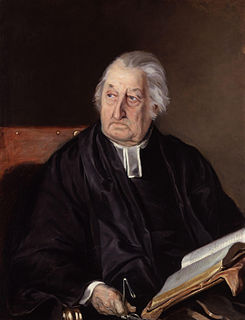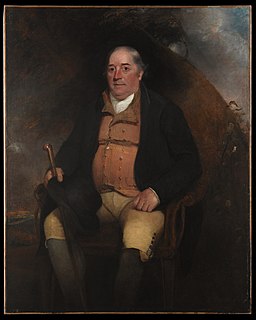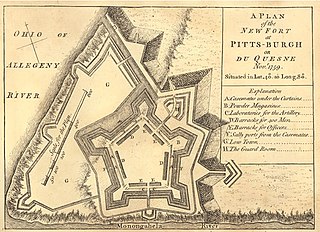 W
WSmallpox was an infectious disease caused by one of two virus variants, Variola major and Variola minor. The agent of variola virus (VARV) belongs to the genus Orthopoxvirus. The last naturally occurring case was diagnosed in October 1977, and the World Health Organization (WHO) certified the global eradication of the disease in 1980. The risk of death after contracting the disease was about 30%, with higher rates among babies. Often those who survived had extensive scarring of their skin, and some were left blind.
 W
WThe 2003 United States smallpox vaccination campaign was a vaccination program announced by the White House on 13 December 2002 as preparedness for bioterrorism using smallpox virus. The campaign aimed to provide the smallpox vaccine to those who would respond to an attack, establishing Smallpox Response Teams and using DryVax to mandatorily vaccinate half a million American military personnel, followed by half a million health care worker volunteers by January 2004. The first vaccine was administered to President Bush.
 W
WThe Balmis Expedition, officially called the Real Expedición Filantrópica de la Vacuna was a Spanish healthcare mission that lasted from 1803 to 1806, led by Dr Francisco Javier de Balmis, which vaccinated millions of inhabitants of Spanish America and Asia against smallpox. Vaccination, that is inoculation with cowpox material, is a much safer way to prevent smallpox than older methods such as variolation, inoculation with smallpox material, which ran the risk of itself spreading smallpox. Vaccination had been pioneered by the English physician Edward Jenner in 1798.
 W
WCatherine-de-Barnes Isolation Hospital was a specialist isolation hospital for infection control in Catherine-de-Barnes, a village within the Metropolitan Borough of Solihull in the English county of West Midlands.
 W
WDiseases and epidemics of the 19th century included long-standing epidemic threats such as smallpox, typhus, yellow fever, and scarlet fever. In addition, cholera emerged as an epidemic threat and spread worldwide in six pandemics in the nineteenth century. The third plague pandemic emerged in China in the mid-nineteenth century and spread worldwide in the 1890s.
 W
WKeith Rodney Dumbell was a British virologist who worked on research and eradication of smallpox.
 W
WJohn Dix Fisher was a physician and founder of Perkins Institution for the Blind in Boston, Massachusetts.
 W
WRowland Hill A.M. was a popular English preacher, enthusiastic evangelical and an influential advocate of smallpox vaccination. He was founder and resident pastor of a wholly independent chapel, the Surrey Chapel, London; chairman of the Religious Tract Society; and a keen supporter of the British and Foreign Bible Society and the London Missionary Society. The famous instigator of penny postage, Rowland Hill, is said to have been christened 'Rowland' after him.
 W
WThe history of smallpox in Mexico spans approximately 500 years from the arrival of the Spanish to the official eradication in 1951. It was brought to Mexico by those in Spanish ships, then spread to the center of Mexico, where it became a significant factor in the fall of Tenochtitlan. During the colonial period, there were major epidemic outbreaks which led to the implementation of sanitary and preventive policy. The introduction of smallpox vaccination in New Spain by Francisco Javier de Balmis and the work of Ignacio Bartolache reduced the mortality and morbidity of the disease.
 W
WJan Ingenhousz or Ingen-Housz FRS was a Dutch physiologist, biologist and chemist.
 W
WBenjamin Jesty was a farmer at Yetminster in Dorset, England, notable for his early experiment in inducing immunity against smallpox using cowpox.
 W
WThe Last Days of Smallpox: Tragedy in Birmingham is a 2018 nonfiction account of the events leading up to and following the 1978 smallpox outbreak in the United Kingdom. The author, Mark Pallen, proposes an explanation of how Janet Parker – the last person to die from smallpox – contracted the infection. This explanation, based on court transcripts and interviews with the barrister who defended the University, and the clinicians and scientists who were involved with the outbreak, contradicts the conclusions of the official government enquiry, The Shooter Report.
 W
WThe London Smallpox Hospital, sometimes known as the Middlesex County Hospital for Smallpox and Inoculation, was established in 1745–6 and was said to be the first establishment of its type in Europe. The earliest buildings were in the West End of London, Finsbury and Bethnal Green, but in 1752 it moved to the house formerly occupied by Sir John Oldcastle in Coldbath Fields, admitting patients from 1753.
 W
WJohn Mudge was a British physician and amateur creator of telescope mirrors. He won the Copley Medal in 1777 for a paper on reflecting telescopes.
 W
WSaint Nicasius of Reims was a bishop of Reims. He founded the first Reims Cathedral and is the patron saint of smallpox victims.
 W
WGeorge Pearson, MD, FRS (1751–1828) was a British physician, chemist and early advocate of Jenner's cowpox vaccination.
 W
WJacques Antoine Rabaut known as Rabaut-Pommier,, was a politician of the French revolutionary era. He was a member of the National Convention (1792–95) and of the Council of Ancients (1795–1801). In 1816 he was exiled for regicide under the Bourbon Restoration, though he later benefited from an amnesty. Deeply committed to medicine, he was an ardent advocate of vaccination.
 W
WThe Siege of Fort Pitt took place during June and July 1763 in what is now the city of Pittsburgh, Pennsylvania, United States. The siege was a part of Pontiac's War, an effort by Native Americans to remove the British from the Ohio Country and Allegheny Plateau after they refused to honor their promises and treaties to leave voluntarily after the defeat of the French. The Native American efforts of diplomacy, and by siege, to remove the British from Fort Pitt ultimately failed.
 W
WThe Smallpox Hospital, sometimes referred to as the Renwick Smallpox Hospital and later the Maternity and Charity Hospital Training School, was a hospital located on Roosevelt Island in Manhattan, New York City. Originally designed by architect James Renwick Jr., the 100-bed hospital opened in 1856, when the area was known as Blackwell's Island.
 W
WThe smallpox vaccine was the first vaccine to be developed against a contagious disease. In 1796, the British doctor Edward Jenner demonstrated that an infection with the relatively mild cowpox virus conferred immunity against the deadly smallpox virus. Cowpox served as a natural vaccine until the modern smallpox vaccine emerged in the 20th century. From 1958 to 1977, the World Health Organization conducted a global vaccination campaign that eradicated smallpox, making it the only human disease to be eradicated. Although routine smallpox vaccination is no longer performed on the general public, the vaccine is still being produced to guard against bioterrorism, biological warfare, and for monkeypox.
 W
WThe Western Hospital, originally the Fulham Hospital, was a hospital for smallpox established in Fulham, London, in 1877.
 W
WWitton Isolation Hospital was a facility for the treatment and quarantine of smallpox victims and their contacts in Birmingham, England, from 1894 to 1966.